A Mitzvah — a Labour of Love
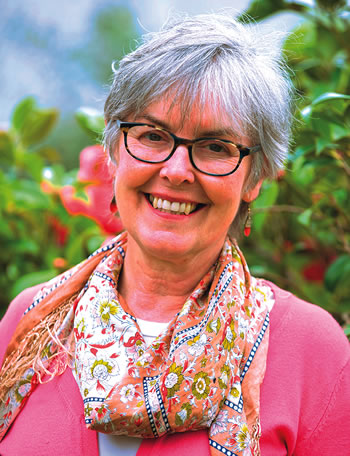
Juliet Palmer
The opportunity to explore another culture and religion doesn’t happen often, so when I spotted an exhibition of Jewish memorabilia at the Wellington Jewish Community Centre I had to go.
Collected and curated by Michael Clements, president of the New Zealand Jewish Archives, the week-long exhibition offered a fascinating snapshot of Jewish life in New Zealand over the past 180 years or so.
“There was only a small collection when I started looking after it 40 years ago. It only took up two drawers in a filing cabinet then,” he says.
“When Sir Paul Reeves, the Governor General, kindly attended our Sabbath, the weekly Saturday service, in 1993, to celebrate 150 years of Jewish services in Wellington, the Board of the Wellington Hebrew Congregation, now Wellington Jewish Community Centre, asked me to put on a display. Since then a large proportion of my time has been spent collecting anything to do with New Zealand Jewry. This exhibition is the fourth we have put on.”
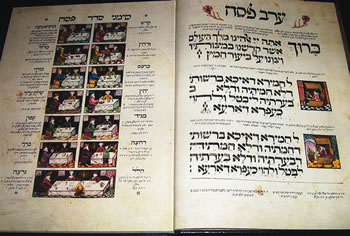
Examples of the Holy Books held by the New Zealand Jewish Archives
Some items Michael chose to display were at hand, like religious objects used in the synagogue services. These included two Sefer (book) Torahs, together with shields (Torahs are decorated with a set of vestments, silver ornaments and a shield), and a set of silver rimonim bells set on the top of the wooden handles on which the parchment scrolls, the five books of Moses, are rolled.
Other items have been sought out – begged, borrowed, bought, donated. Today the collection is of an impressive size.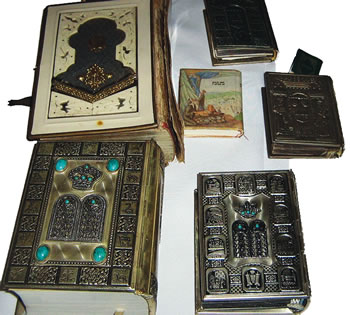
Thanks to Michael’s foraging from one end of the country to the other, the Archives include all manner of personal, domestic, sacred and traditional items. Together, they show a culture tantalisingly familiar, yet foreign, probably better known to outsiders through the Old Testament and Hollywood than personal encounters.
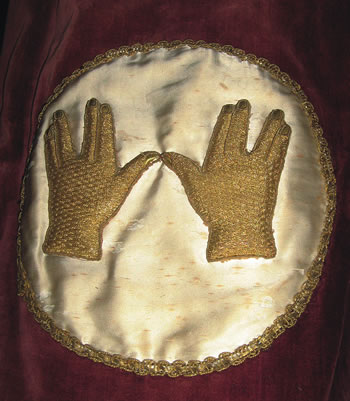
Sign of the Cohen
The history of how some memorabilia were found is almost as interesting as the items themselves. For instance, the illuminated address to Wellington’s eminent Rabbi, Herman van Staveren, dated 1929, was found in wonderful condition, protected from sunlight damage by the shelves it had slipped behind.
Probably the most magnificent item Michael’s treasure hunt uncovered was the silk velvet curtain used to cover the Holy Ark where the Scrolls of Law reside. Used in Wellington’s now demolished first and second synagogues, it was put into a box and forgotten for decades. Staff at Te Papa restored it and it is now on display at the Museum.
Another unexpected find was the iron Star of David from the front of the second synagogue. Michael happened to be passing by in 1976 when the building was being demolished and rescued it from tip-bound rubbish.
The collection’s eclectic selection of books displayed treasures like the Dutch edition of the Babylonian Talmud printed in 1714, and beautiful copies of the Torah – many of which are obviously antique. At first I couldn’t see why they seemed strange – and then the penny dropped: they were displayed with what I’d call their backs facing up, beginning where I’d generally expect to see the end, as Hebrew is written from right to left.
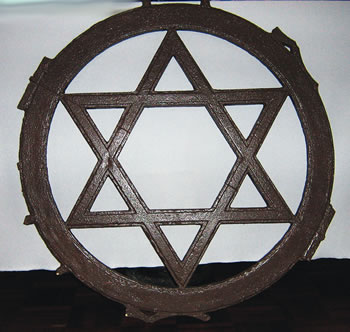 Others books suggested a thriving local community, like the prayer book used in the first Wellington Synagogue (1873 to 1909). Next to the religious works – as if to show religion’s tight connection with the family, was a cookery book collection, compiled by local Jewish women’s clubs.
Others books suggested a thriving local community, like the prayer book used in the first Wellington Synagogue (1873 to 1909). Next to the religious works – as if to show religion’s tight connection with the family, was a cookery book collection, compiled by local Jewish women’s clubs.
Several tables were set for ritual meals, but the one set for the Passover, to remember the exodus from Egypt, was especially interesting. There, before me, were the four wine cups that participants would share at different times during the meal; there were the Seder dishes, arranged with the same food in the same way as would have been set before Christ and the apostles at the Last Supper: the unleavened bread, the shank-bone, egg, bitter herbs, charoset (a fruit and nut paste) and green vegetable. Each item has a purpose, a tradition, the genesis of the Eucharistic meal we celebrate ourselves.
Providing information about each exhibit is something Michael spent time on, which made the experience doubly interesting. Take the white, blue-trimmed, fringed tzitzit (prayer shawls) that the men wear across their shoulders: I learned that each fringe strand reminds the wearer of a good deed (or mitzvah) they should do during their lives.
Michael also told me about the Sign of the Cohen – a priestly blessing. The Sign, though not the words, will be familiar to Star Trek fans, as Leonard Nimoy / Dr Spock copied it for the ‘Vulcan Salute.’ Nimoy was a Cohen – a member of the priestly class.
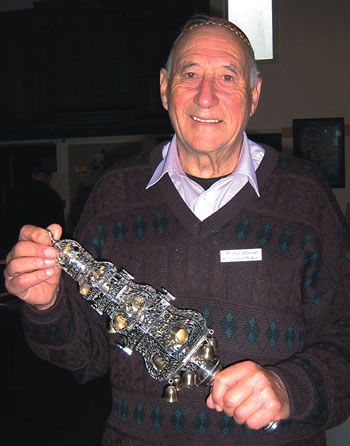
Mr Michael Clements, holding a yad ... and blowing a shofar
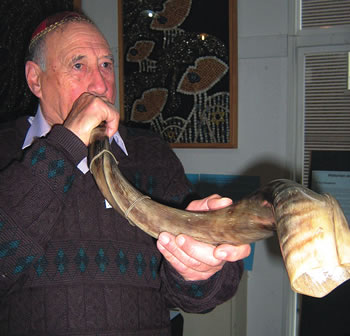
For me, one of the most interesting exhibits was Wellington synagogue's new Torah scroll. At less than a year old, it already has a history. It was the last wish of Wellingtonian, Martin Chait, to purchase a new one. The community and friends contributed, and New Zealand’s only scribe spent 10 months writing the script on kosher parchment scroll.
All Jews from the community would sit next to and touch the scribe’s arm while he was writing – a symbolic act, as contributing to writing a Torah scroll – even just a letter – is a mitzvah.
To protect the Torah parchment from being finger-marked, Michael shows me the solution -- a yad (pronounced 'yard'): a pointer used instead of a finger to follow the text while reading.
Another item that caught my eye was a shofar, a hollowed-out ram’s horn, used for religious purposes and blown a number of times over the year. Michael demonstrated. A loud, unmusical sound emitted, people turned and looked and he said jokingly “Not bad for someone of 90.” “He exaggerates – more like 80,” volunteers one of his friends.
Mounting an exhibition like this is a huge task and Michael does most of the work. Why does he do it?
“Because I can,” he replies.
In fact, he says he’d like to expand and have an interfaith exhibition with Catholics and other religions.
Unpaid, mostly alone, despite the graft this involves, he obviously enjoys collecting and exhibiting.
It’s a labour of love – a mitzvah, perhaps.
 Entries(RSS)
Entries(RSS)